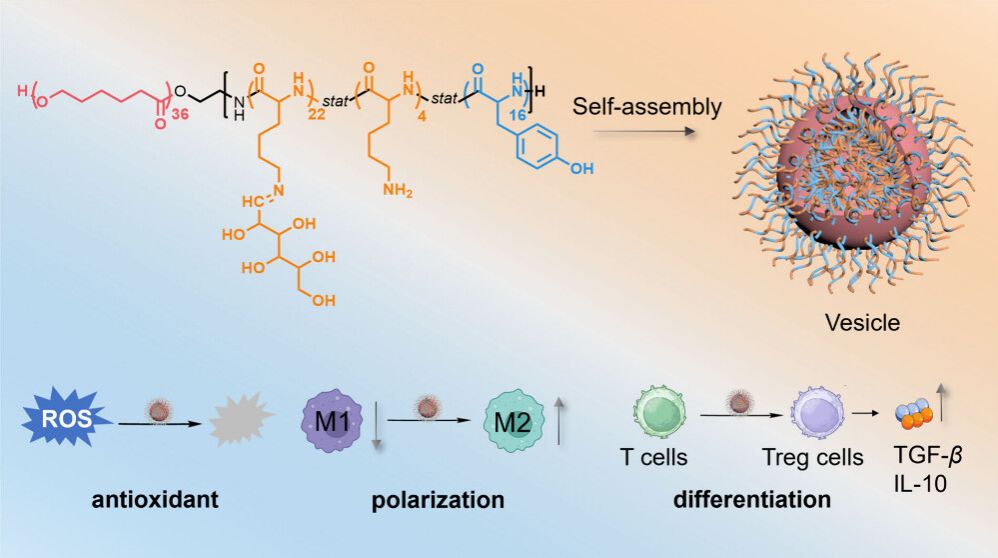
Abstract
Chronic diabetic wound patients usually show high glucose levels and systemic immune disorder, resulting in high reactive oxygen species (ROS) levels and immune cell dysfunction, prolonged inflammation, and delayed wound healing. Herein, we prepared an antioxidant and immunomodulatory polymer vesicle for diabetic wound treatment. This vesicle is self-assembled from poly(ε-caprolactone)36-block-poly[lysine4-stat-(lysine-mannose)22-stat-tyrosine)16] ([PCL36-b-P[Lys4-stat-(Lys-Man)22-stat-Tyr16]). Polytyrosine is an antioxidant polypeptide that can scavenge ROS. d-Mannose was introduced to afford immunomodulatory functions by promoting macrophage transformation and Treg cell activation through inhibitory cytokines. The mice treated with polymer vesicles showed 23.7% higher Treg cell levels and a 91.3% higher M2/M1 ratio than those treated with PBS. Animal tests confirmed this vesicle accelerated healing and achieved complete healing of S. aureus-infected diabetic wounds within 8 days. Overall, this is the first antioxidant and immunomodulatory vesicle for diabetic wound healing by scavenging ROS and regulating immune homeostasis, opening new avenues for effective diabetic wound healing.
文章链接:Nano Letters. 2024